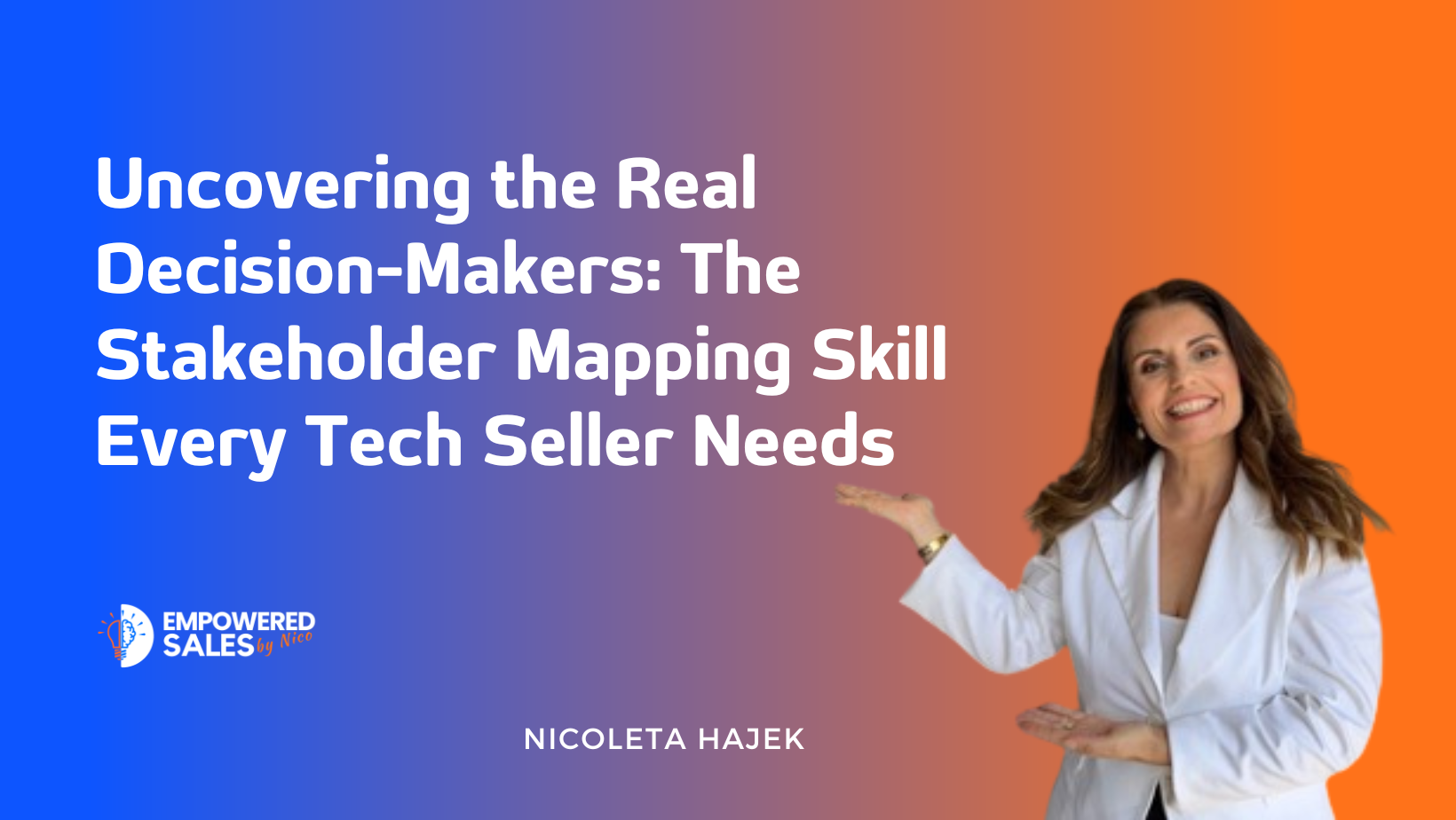I help engineers and sales technical professionals become confident, credible sales leaders | $30M+ Closed Deals | Global Sales Mentor
Walking into a client meeting without knowing who holds real influence is like launching a product without testing it first—you’re relying on assumptions, not strategy.
As a technical expert stepping into the world of B2B sales, you’re often comfortable talking to engineers and users. But to close high-value deals, you need to win over finance, procurement, and executive leadership—and they speak a different language.
That’s why I teach all my students one of the most powerful techniques I’ve used over 25 years in global sales: Stakeholder Mapping.
The Problem: Great Solutions, Missed Opportunities
You might deliver the most technically superior solution on the market. But if you’re only selling to one type of stakeholder—the one who “gets” your tech—you risk losing to competitors who speak to the entire buying group.
I’ve seen engineers celebrate glowing feedback from plant teams, only to lose the deal because the CFO didn’t see the ROI, or the COO didn’t connect the dots to strategic goals.
Here’s what most miss: 🌐 B2B deals now involve 6–10 decision-makers. 🎯 Winning means identifying them and aligning your message to their priorities.
The Tool: Discussion Maps + Stakeholder Mapping
Imagine if you could walk out of a client meeting and clearly see who holds the power—and who’s influencing the conversation behind the scenes.
Step 1: The Discussion Map Inspired by Daniel Pink, this technique helps you visually decode a room:
- ✅ Note who’s present and how often they speak.
- 🎯 Track who others respond to or seek agreement from.
- 🔍 Watch for the quiet observer who gets final approval.
Step 2: The Stakeholder Influence Grid Map stakeholders on two axes:
- Influence – How much sway do they have?
- Disposition – Are they positive, neutral, or resistant?
🎯 Focus on high-influence, neutral/negative stakeholders—that’s where you need to build bridges.

Real-World Example: From Technical Win to Strategic Close
One of my clients in industrial automation had built strong rapport with engineers. But the deal stalled. Why?
They had zero contact with the CFO.
We mapped the stakeholders, reframed their pitch around ROI and capital impact, and had the CFO on board within two weeks. The result? A $400K deal closed in less than a month.
Takeaway: 💡 It wasn’t the product that changed. It was the message—tailored to the right decision-maker.
How to Use This in Your Next Deal
🔎 Identify ALL Stakeholders: Don’t stop at the user. Who handles budget, compliance, and strategy?
💬 Speak Their Language:
- Execs → “This supports your 3-year strategic goals.”
- Finance → “Here’s the ROI and cost-saving analysis.”
- Procurement → “Let’s review contract terms and payment cycles.”
- Technical Users → “These specs will reduce downtime by 20%.”
📊 Build Your Influence Grid: Use your CRM or even a whiteboard. Highlight gaps in your relationships—and build a plan to engage.
Final Thoughts: You Don’t Need to Be Loud to Be Effective
Some of the most powerful people in a meeting say the least. But if others defer to them, or if consensus circles back to them—you’ve just found your real buyer.
Use Stakeholder Mapping to become a strategic seller—not just a subject-matter expert.
Your solution deserves to win. Let’s make sure your message reaches the people who can say “yes.”
🔧 Want a hands-on guide? Join my upcoming Tech Sales Webinar and get my Stakeholder Mapping Toolkit—free for all live attendees.
Let me know—have you mapped your current deal? What surprised you the most?
— Nicoleta Hajek Global Sales Coach for Technical Experts
Follow me on [LinkedIn] for daily insights or on my page ProSales Upsell Engine

